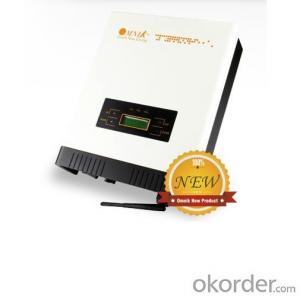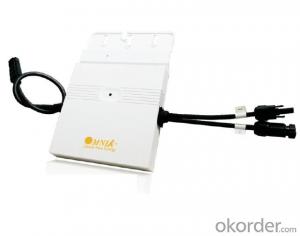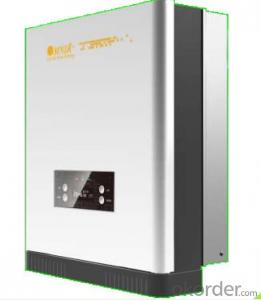On grid solar inverter Omniksol-1.5k-TL2
- Loading Port:
- Shanghai
- Payment Terms:
- TT OR LC
- Min Order Qty:
- 12 pc
- Supply Capability:
- 3000 pc/month
OKorder Service Pledge
OKorder Financial Service
You Might Also Like
Omnik new energy solar inverter
Omniksol-2.0k-TL Photon Efficiency up to 3kW
in the world------ Photon tested Jan. 2012.
Omniksol-1.5k-TL2
1.Futures
Built-in GPRS as option
Built-in Wifi as option
External inductor and built-in fan
smaller and lighter, 2k only 9.6kg
High performance DSP for algorithm control
VDE-AR-N 4105 certification
Self-developed topology design
Multi-button touch interface
LCD screen visible at night
10 years warranty(5~15 years as option)
2.Technical data:

3.product certification'
EN 61000
VDE 0126-1-1
C10/11
G83/2
UTE C15-712-1
AS4777
CQC
CE10-21
EN50438
4. product outlook
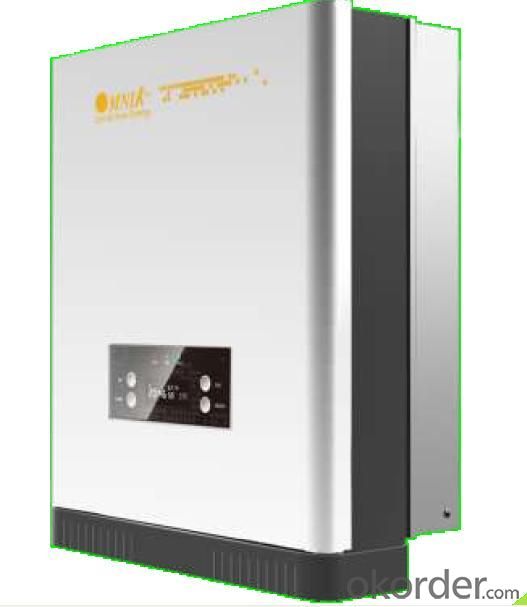
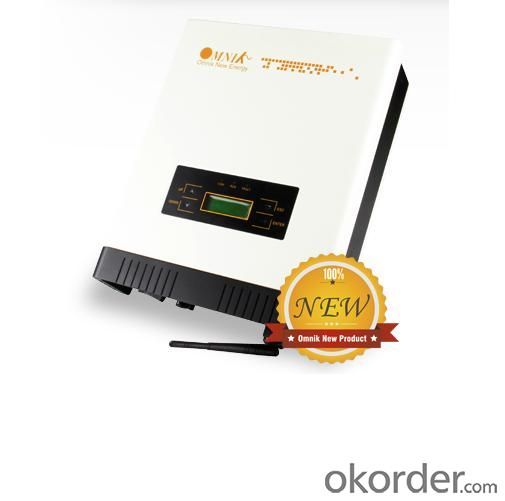
1. How long will my inquiry get response?
Your inquiry related to our products or prices will be replied within 24 hours.
2. Can I get professional service and suggestion?
Well-trained and experienced staffs to answer all your questions in fluent English.
3. Do you accept OEM or customized design?
OEM & ODM, any your customized lightings we can help you to design and put into product.
4. What if I need specific design?
Distributorship are offered for your unique design and some our current models.
- Q:What is the role of a voltage regulator in a solar inverter?
- The role of a voltage regulator in a solar inverter is to maintain a consistent and stable output voltage despite fluctuations in the input voltage from the solar panels. It ensures that the electricity generated by the solar panels is converted and delivered to the connected devices or grid at the required voltage level, preventing any damage to the devices and optimizing the overall efficiency of the solar power system.
- Q:Can a solar inverter be used for off-grid systems?
- Yes, a solar inverter can be used for off-grid systems. Off-grid systems are not connected to the utility grid and rely solely on renewable energy sources like solar panels. A solar inverter converts the direct current (DC) generated by the solar panels into alternating current (AC) which can be used to power appliances and devices in an off-grid system.
- Q:How do you calculate the total power capacity for a solar inverter?
- To calculate the total power capacity for a solar inverter, you need to consider the maximum power output of the solar panels connected to it. The total power capacity of the inverter should be equal to or greater than the total maximum power output of all the solar panels combined. This ensures that the inverter can handle the maximum power generated by the solar panels and efficiently convert it into usable electricity.
- Q:Can a solar inverter be used in areas with high levels of lightning activity?
- Yes, a solar inverter can be used in areas with high levels of lightning activity. However, it is important to ensure proper installation and grounding measures are in place to protect the inverter from potential damage caused by lightning strikes.
- Q:Can a solar inverter be upgraded or expanded?
- Yes, a solar inverter can be upgraded or expanded. Upgrades can involve installing additional features, improving efficiency, or increasing capacity. Expansion can involve connecting multiple inverters in parallel or series to accommodate larger solar installations. However, it is important to ensure compatibility and consult with a professional to ensure the upgrade or expansion is done correctly.
- Q:What is the role of isolation in a solar inverter?
- The role of isolation in a solar inverter is to provide safety and protect the user from electrical shocks. It separates the input and output sides of the inverter, ensuring that any faults or disturbances on one side do not affect the other. Isolation also helps to minimize electrical noise and interference, improving the overall performance and reliability of the solar inverter.
- Q:How does a solar inverter handle electromagnetic interference (EMI)?
- A solar inverter handles electromagnetic interference (EMI) by incorporating various filtering techniques and shielding mechanisms. These include the use of EMI filters, capacitors, and transformers to minimize the impact of EMI on the inverter's performance. Additionally, proper grounding and shielding of sensitive components help to reduce the risk of EMI interference. Overall, the design and implementation of these protective measures ensure that a solar inverter can effectively handle and mitigate electromagnetic interference.
- Q:Three-phase photovoltaic inverter grid, the use of phase-locked loop is what?
- In addition to the function of converting DC current into alternating current, the inverter also has the maximum output tracking function (MPPT), overvoltage protection, short circuit protection, island protection, overheat protection, overload protection and DC grounding
- Q:How does a solar inverter provide ground fault protection?
- A solar inverter provides ground fault protection by continuously monitoring the flow of electricity between the solar panels and the electrical grid. If it detects any abnormal or excessive current leakage to the ground, it quickly shuts off the flow of electricity to prevent electrical hazards, such as electric shocks or electrical fires.
- Q:How does a solar inverter handle electromagnetic interference?
- A solar inverter handles electromagnetic interference (EMI) by incorporating various measures to reduce and mitigate its impact. These measures include using shielding materials, implementing proper grounding techniques, and utilizing filters to suppress EMI. Additionally, advanced inverters may employ digital signal processing techniques to minimize the effects of EMI on the solar power system.
1. Manufacturer Overview |
|
|---|---|
| Location | |
| Year Established | |
| Annual Output Value | |
| Main Markets | |
| Company Certifications | |
2. Manufacturer Certificates |
|
|---|---|
| a) Certification Name | |
| Range | |
| Reference | |
| Validity Period | |
3. Manufacturer Capability |
|
|---|---|
| a)Trade Capacity | |
| Nearest Port | |
| Export Percentage | |
| No.of Employees in Trade Department | |
| Language Spoken: | |
| b)Factory Information | |
| Factory Size: | |
| No. of Production Lines | |
| Contract Manufacturing | |
| Product Price Range | |
Send your message to us
On grid solar inverter Omniksol-1.5k-TL2
- Loading Port:
- Shanghai
- Payment Terms:
- TT OR LC
- Min Order Qty:
- 12 pc
- Supply Capability:
- 3000 pc/month
OKorder Service Pledge
OKorder Financial Service
Similar products
New products
Hot products
Hot Searches
Related keywords
